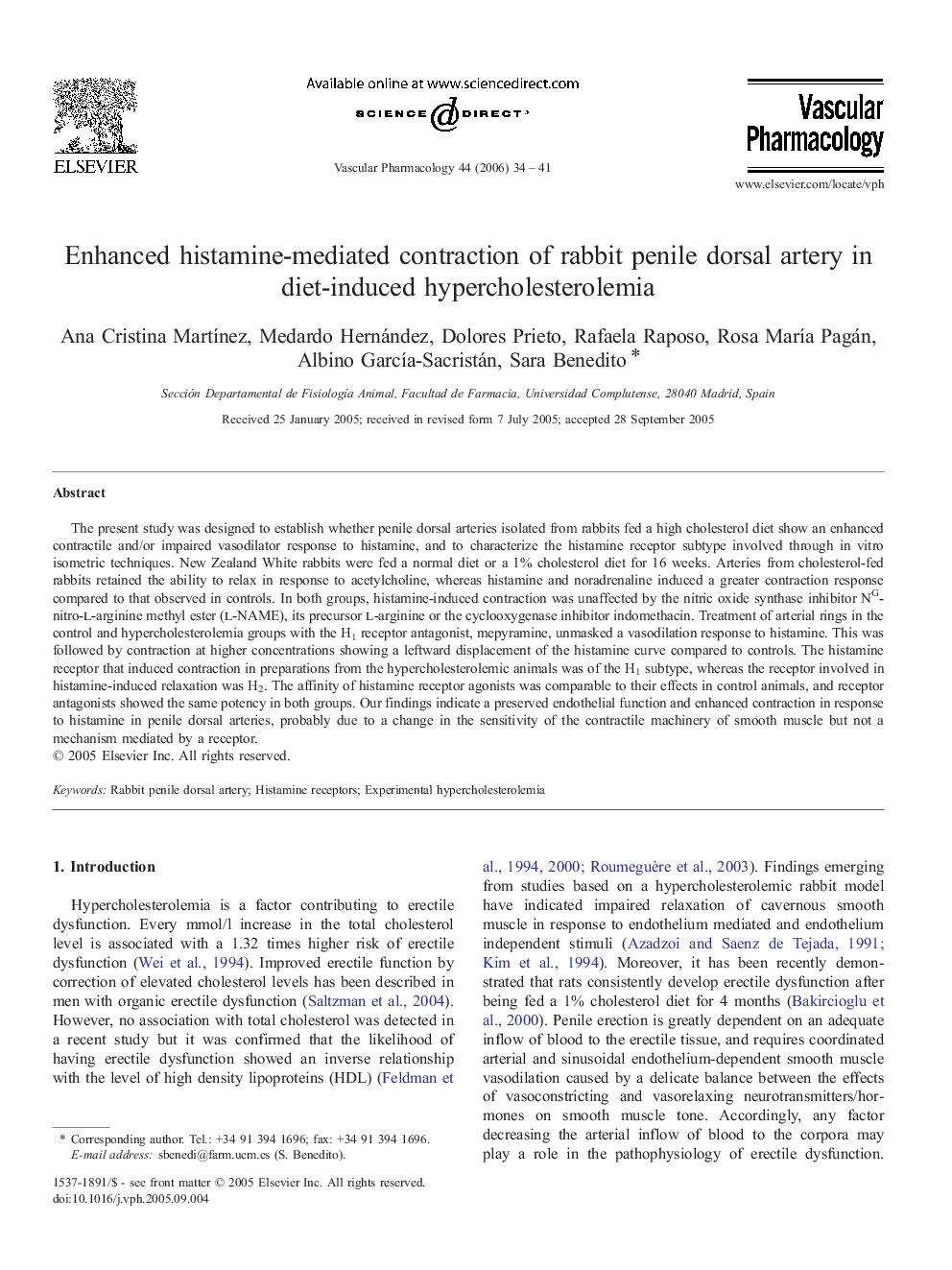| Article ID | Journal | Published Year | Pages | File Type |
|---|---|---|---|---|
| 2575204 | Vascular Pharmacology | 2006 | 8 Pages |
The present study was designed to establish whether penile dorsal arteries isolated from rabbits fed a high cholesterol diet show an enhanced contractile and/or impaired vasodilator response to histamine, and to characterize the histamine receptor subtype involved through in vitro isometric techniques. New Zealand White rabbits were fed a normal diet or a 1% cholesterol diet for 16 weeks. Arteries from cholesterol-fed rabbits retained the ability to relax in response to acetylcholine, whereas histamine and noradrenaline induced a greater contraction response compared to that observed in controls. In both groups, histamine-induced contraction was unaffected by the nitric oxide synthase inhibitor NG-nitro-l-arginine methyl ester (l-NAME), its precursor l-arginine or the cyclooxygenase inhibitor indomethacin. Treatment of arterial rings in the control and hypercholesterolemia groups with the H1 receptor antagonist, mepyramine, unmasked a vasodilation response to histamine. This was followed by contraction at higher concentrations showing a leftward displacement of the histamine curve compared to controls. The histamine receptor that induced contraction in preparations from the hypercholesterolemic animals was of the H1 subtype, whereas the receptor involved in histamine-induced relaxation was H2. The affinity of histamine receptor agonists was comparable to their effects in control animals, and receptor antagonists showed the same potency in both groups. Our findings indicate a preserved endothelial function and enhanced contraction in response to histamine in penile dorsal arteries, probably due to a change in the sensitivity of the contractile machinery of smooth muscle but not a mechanism mediated by a receptor.
